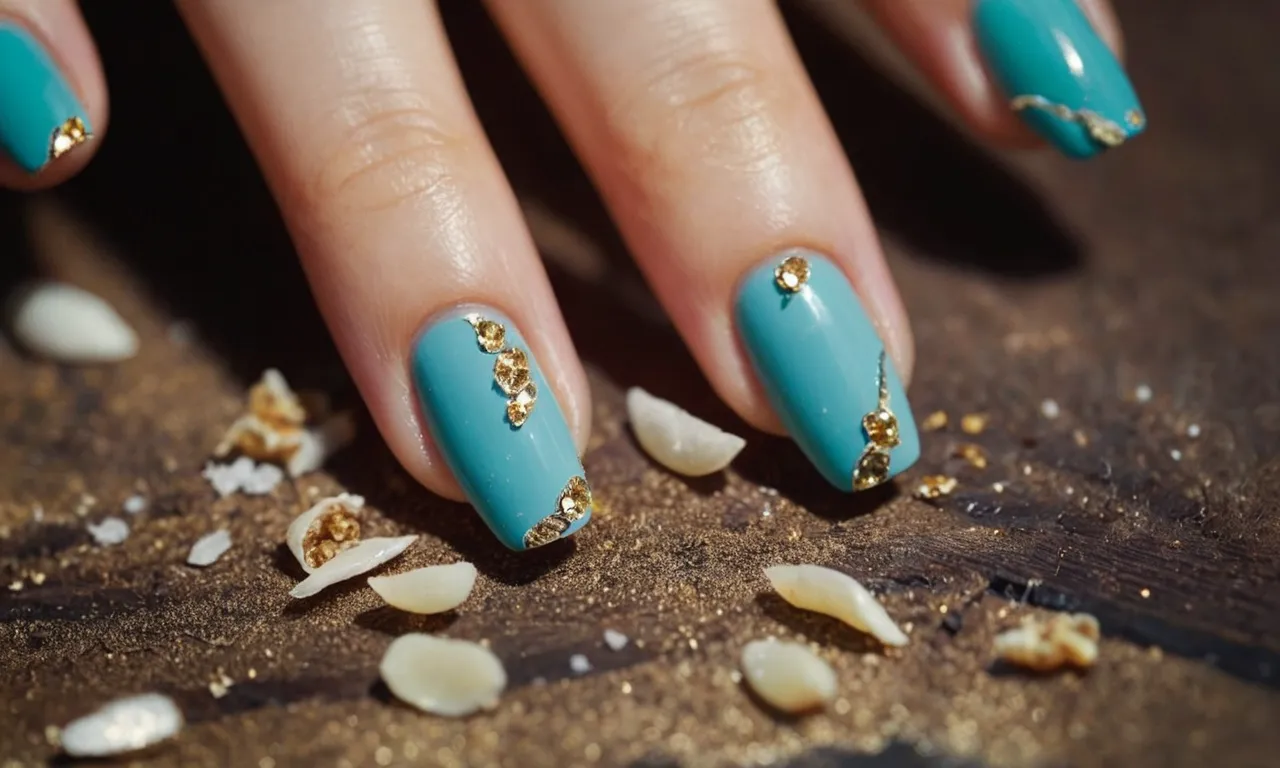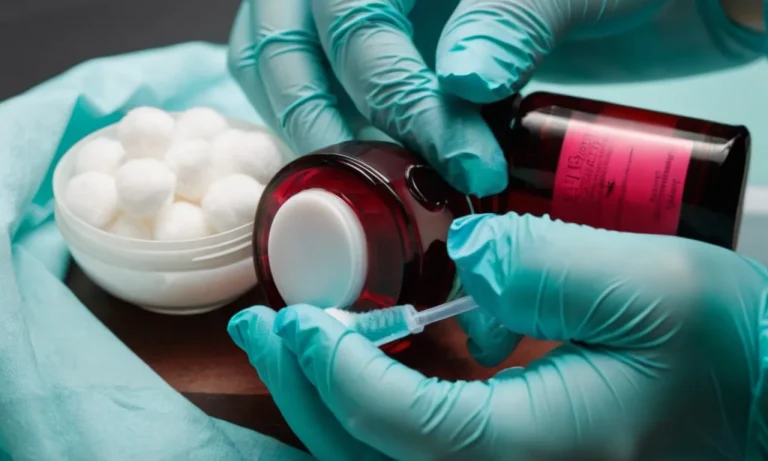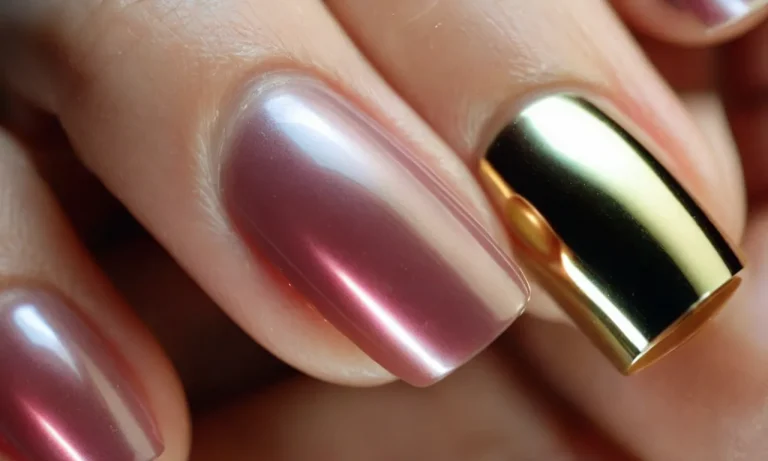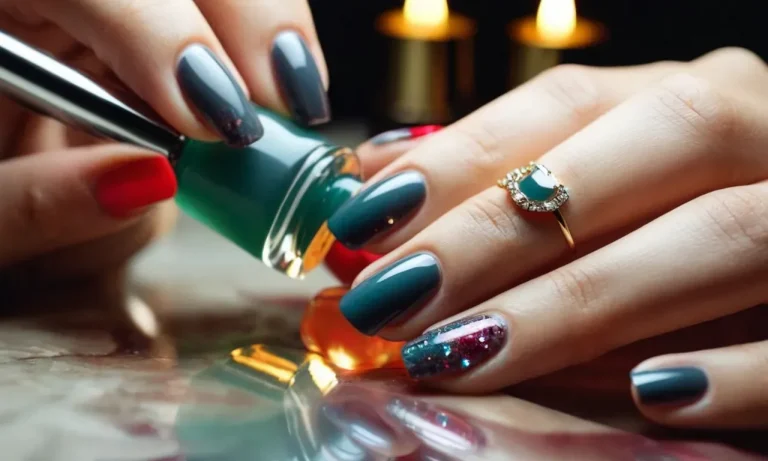Does Nail Glue Damage Nails? A Comprehensive Guide
Nail art and extensions have become extremely popular lately. While they allow you to express your creativity, many worry about the potential damage caused by frequent use of nail glue. If you’re looking for a definitive answer, you’ve come to the right place.
If you’re short on time, here’s a quick answer to your question: While nail glue doesn’t directly damage the nail plate, improper use and removal can weaken nails and cause damage over time.
In this comprehensive guide, we’ll explore the intricacies of nail glue, its ingredients, application techniques, removal processes, and care tips to avoid damage.
How Nail Glue Works
Main ingredients and how they bond nails
Nail glue is formulated with a few key ingredients that allow it to quickly and strongly bond artificial nails to natural nails. The main ingredients are:
- Cyanoacrylate – This is the key active ingredient that creates the strong adhesive bond. Cyanoacrylate monomers rapidly polymerize and harden when they come in contact with surfaces like nails, skin, and artificial nails.
- Filler ingredients – Materials like titanium dioxide, silica, and clay are added to modify viscosity, control setting speed, and reduce brittleness.
- Plasticizers – Chemicals like dibutyl phthalate help keep the glue flexible and prevent cracking after it dries.
- Colorants – Dyes are added for appearance and visibility when applying.
When nail glue is applied to the nail surface, the cyanoacrylate monomers immediately begin bonding to the amino acids in the nail keratin layers as well as the artificial nail surface through hydrogen bonding. The rapid polymerization creates a tight, rigid bond in about 10-60 seconds.
Nail glue is specially designed to cure quickly and adhere very strongly to withstand the demands of daily wear and tear.
Types of nail glue and their differences
There are a few main types of artificial nail glue that have slightly different properties:
- Regular nail glue – The most common type, regular nail glue provides a quick bond and is easy to apply. It may require more frequent reapplication than long-lasting glue.
- Long-lasting nail glue – Formulated to create more durable adhesion, long-lasting glue maintains its strength for 1-2 weeks without reapplication. The downside is it takes longer to set.
- Gel nail glue – This UV-activated glue needs to be cured under a special lamp. It bonds extremely firmly but requires more time and equipment.
- Brush-on nail glue – Available in bottles with brush applicators, this offers precise control for minimal mess.
- Nail tip glue – Specifically designed for adhering artificial nail tips, this glue has extra gap-filling abilities.
| Glue Type | Bonding Time | Longevity | Ease of Application |
|---|---|---|---|
| Regular | 10-30 seconds | 3-5 days | Easy |
| Long-lasting | 60-90 seconds | Up to 2 weeks | Moderate |
| Gel | Cures in 30-60 seconds under UV | 2+ weeks | More difficult |
| Brush-on | 20-40 seconds | 3-7 days | Precise |
| Nail tip | 30-60 seconds | 5-7 days | Easy for tips |
While cyanoacrylate is the active ingredient in most nail glue types, the setting time, viscosity, and longevity can vary based on the formulation. This allows people to choose the product that best suits their application needs and preferences.
Does Using Nail Glue Damage Nails?
Nail glue is an essential product for nail enhancements like acrylics, tips, and press-on nails. While glue is necessary to keep enhancements secured to natural nails, some worry that using it can be damaging. Here’s a look at whether nail glue actually damages nails.
Glue Doesn’t Directly Damage the Nail Plate
The nail plate, which is the hard keratin structure that makes up the visible part of the nail, is not damaged by nail glue itself. Nail glue is formulated to securely bond to the nail plate without weakening or penetrating it.
The ingredients, which often include ethyl cyanoacrylate, benzoate ester, and inhibitors, interact with the nail proteins to create a strong hold that can be soaked off during removal.
Applying a thin layer of glue according to package directions will not alter the nail plate. As long as the nail is free of oil and debris so the glue can adhere properly, using nail glue will not directly damage the integrity of the nail plate.
Improper Application Can Cause Damage
While the glue itself is safe when used correctly, mistakes made during application can potentially damage nails:
- Applying glue too thickly can flood the nail plate and cuticle area with adhesive, which is difficult to fully remove.
- Getting glue on the skin can cause burns and irritation.
- Not allowing glue to fully cure before applying enhacements can weaken bond strength.
- Failing to roughen the nail plate surface can impede proper bonding and allow lifting or detachment.
- Using expired glue or contaminated brushes can introduce bacteria under enhancements.
To prevent damage, glue should be used sparingly and brushed on thinly. Nails should be properly prepared and glue given time to cure before applying any overlays. Proper sanitation of tools and replacing expired glue is also critical.
Harsh Removal Can Weaken Nails
While glue itself does not damage nails, how the glue is removed certainly can. Soaking enhancements off using acetone or other solvents will break the glue bonds and allow safe removal. However, if enhancements are picked or pried off, it can take layers of the nail plate with it, leading to thinning, peeling, and splitting.
Similarly, using metal tools or abrasive hand files to remove glue residue can aggressively scrape and thin the nail plate if not done carefully. This kind of mechanical damage makes nails more prone to cracking and breaking.
To avoid removal damage, be patient and allow the glue to fully soak off. Gently roll off any enhancement remnants and use a soft buffer to take off remaining glue instead of scraping. Go slowly and avoid applying too much pressure.
Applying Glue Properly to Avoid Damage
Prep nails correctly
Proper nail prep is crucial for avoiding damage when using nail glue. Here are some tips for prepping nails:
- Start with clean, dry nails. Remove any old nail polish and wash hands thoroughly to remove oils and residue.
- Gently push back and trim cuticles. Don’t cut cuticles as this can lead to infection.
- Smooth nails with a fine grit nail file or buffer. This helps the glue adhere better.
- Use nail dehydrator or gently buff nail surface to remove shine. This helps glue stick.
- Avoid using lotion or oil on nails before gluing on tips or false nails as it can prevent proper adhesion.
Use sparingly and avoid cuticles
Applying just the right amount of glue is key for avoiding damage:
- Use a minimal, thin layer of glue – too much can lead to lifting and improper bonding.
- Avoid getting glue on the cuticles or skin around nails as this can damage live tissue.
- Carefully wipe away any excess glue with a tool or cotton swab before it dries.
- Be precise with application. Using something like a toothpick can help apply glue directly where needed.
- Always seal the free edge of the natural nail to prevent lifting and breakage.
Let glue cure fully before applying force
For a strong, damage-free bond:
- Allow glue to cure fully – this takes about 60-90 seconds.
- Don’t wiggle or adjust tips or press down hard until cured.
- Once cured, gently press down starting in the center and working outwards.
- Avoid biting or picking at enhancements while the glue is still soft and pliable.
- Let the bond strengthen over 2-4 hours before heavy use of hands.
Following proper glue application techniques helps create a strong bond between real and false nails, preventing lifting, cracking or other damage. With the right prep, sparing use and proper curing time nail glue doesn’t have to be damaging.
Using quality products specifically designed for nail application helps too. Visiting a professional regularly is ideal but DIY glue use can be safe when applied carefully.
Removing Glue Safely to Protect Nails
Soak off glue instead of pulling forcefully
Rather than peeling off nail glue, which can rip layers of the nail plate, opt for a soak-off method instead. Fill a bowl with pure acetone or an acetone-based nail polish remover. Gently place your fingertips in the bowl, allowing the solution to fully saturate the nail glue.
Let it soak for at least 10 minutes to fully dissolve the adhesive. The glue should then slide right off without any damaging force.
If there are still sticky residue spots, use a wooden cuticle pusher, orange stick, or foil wrap to gently roll the remainder off. Avoid metal nail tools as these can potentially scratch the nail bed. Be patient with the process and remember that abruptly pulling increases the chances of lifting layers of the nail plate, weakening nail integrity.
Use nail oil to hydrate after removal
Once removed, it’s vital to nourish nails and cuticles with conditioning oil. Glue removal can dry out the nail plate, especially with repeated use. Choose a nourishing oil like jojoba, vitamin E, or coconut that absorbs well and provides moisturizing fatty acids.
Apply a few drops directly to the bare nail and massage into the nail plate, hyponychium (tissue underneath tip), nail folds, and cuticles. This hydrates these areas and prevents brittleness and breakage.
Continue oiling nails daily, focusing on the bare portions not covered by polish. The oils sink into gaps in keratin fibers, creating a protective barrier that locks in moisture. Well-hydrated nails are more flexible and less prone to damage over time with regular glue use.
For deeper conditioning, apply oil and wear cotton gloves overnight as the warmth helps absorption.
Give nails a break between sets
While beautiful nail enhancements are exciting, it’s wise to give nails some glue-free breaks. Industry experts, like those at Nail Care HQ, recommend allowing nails to fully breathe without glue, tips, or polish for at least as long as the last set was worn.
For example, if you wore nail glue for two weeks, aim to go glue-free for two weeks before applying a new set.
This recovery time enables moisture levels to normalize and any micro-traumas like tiny lifts or cracks to fully mend. Additionally, the nail adhesion surface restored itself, allowing glue to properly bond the next time.
Think of going glue-free as hitting a refreshing restart button for clean, healthy nail foundation.
Caring for Nails Before and After Wearing Extensions
Keep nails conditioned with oils
Keeping natural nails properly conditioned is crucial for protecting them from damage when wearing extensions. Massaging a few drops of oil, like jojoba, vitamin E or coconut oil, into the nails and cuticles daily will keep them from becoming too dry and brittle.
The oils moisturize the nails, stimulate growth and prevent cracking or peeling. It’s best to do this both before getting extensions to prep the nails, and during wear to protect the nail bed. Be sure to push back cuticles gently with a tool as well.
Trim and file nails regularly
It’s important to maintain nails by expertly shaping and filing them about every two weeks both before and while wearing extensions. Trimming nails straight across to keep a squoval shape will help extensions adhere better and distribute stress evenly across the nail plate.
Using a high-quality file to smooth edges will further protect the nails and prevent cracking or lifting. The nail technician should examine and care for the natural nails at fill appointments as well to catch any problems right away.
Take biotin supplements for strength
Brittle, thin or slow growing nails won’t properly support the weight and duration of wearing extensions. Many nail care experts recommend taking a daily biotin supplement of 2500-5000 mcgs for at least 3 months before getting extensions to substantially strengthen nails and stimulate quicker growth.
Biotin is essential for nail plate structure and continuation down the nail bed. Maintaining the supplement regimen while wearing extensions provides continual support against breakage or shedding. After removing extensions, biotin aids nail recovery and reconditioning too.
According to studies referenced on NCBI, those taking biotin supplements had clearer improvements in nail thickness and resilience compared to control groups. Over 90% of women evaluated reported nails growing quicker, longer and stronger with less splitting after using biotin.
It’s best taken consistently in combination with a balanced diet and nail vitamins containing zinc, vitamin C and folic acid for full structural regeneration.
Conclusion
While nail glue itself does not damage nails, improper use and removal techniques can weaken the nail plate over time. Being mindful of application, soaking off glue safely, and caring for bare nails between sets are key to avoiding damage.
With proper prep, gentle removal, and nourishment, you can enjoy the creative benefits of nail extensions worry-free! Our tips will help you maintain strong, healthy nails even with frequent manicures.







